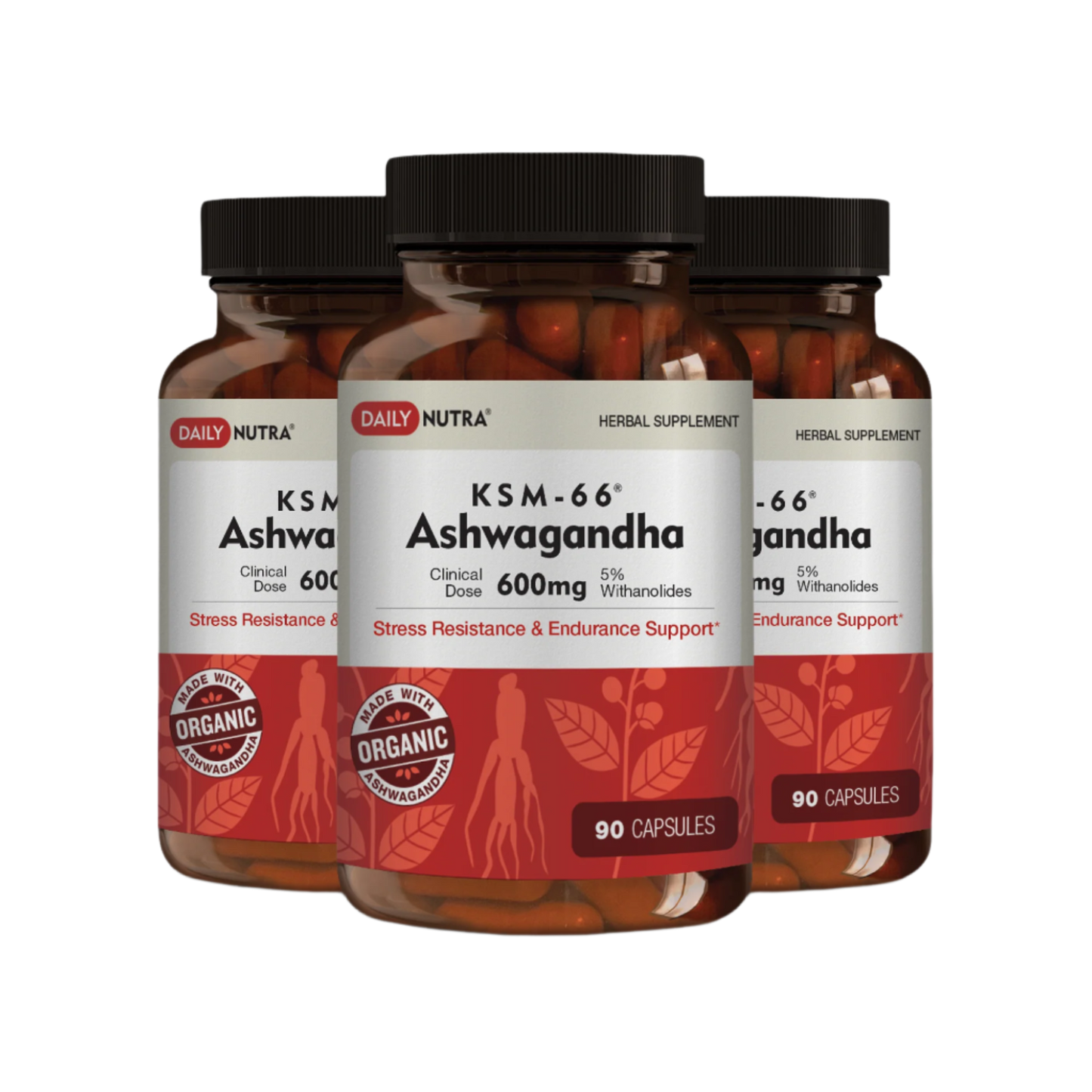
Ashwagandha has taken center stage in the world of wellness for good reason.
This adaptogenic herb promises a calmer mind, more energy, better sleep, and even hormone balance.
But the magic isn’t just in the herb itself—it’s also in how you take it.
So if you’re wondering, “What’s the best way to take ashwagandha?”—you’re in the right place.
Let’s walk through the most effective ways to take it, when to take it, and how to actually feel the difference.
Forms of Ashwagandha: Which One Is Best?
There are various forms of ashwagandha, and each has advantages and disadvantages based on your preferences and way of life (1).
The most common forms include:
Capsules are convenient, portable, and easy to dose.
You’ll find standard extracts like KSM-66 or Sensoril in these, which are clinically studied and potent.
Powders are great if you like smoothies, lattes, or evening tonics.
The earthy flavor takes some getting used to, but they absorb well.
Some people feel the effects more quickly with powder.
Tinctures are liquid extracts and tend to be fast-acting.
If you’re looking for something that hits your system quickly, tinctures are a good option.
Gummies are tasty and fun, but watch for added sugar and lower potency.
They’re great for beginners or people who hate swallowing pills.
Teas are a gentle, soothing option, but usually not concentrated enough for therapeutic benefits unless you’re drinking multiple cups daily.
The bottom line? Capsules are best for convenience and dosage accuracy.
Powders and tinctures are great if you want faster absorption or enjoy customizing your routine.
With Food or Without?
Ashwagandha is fat-soluble, which means it absorbs better when taken with food, especially something that contains a little fat, like nut butter or avocado.
Taking it on an empty stomach may lead to mild nausea in some people (2).
So, unless you’re experimenting with timing or have a sensitive gut, pairing it with meals is the most effective and comfortable route.
Morning, Night, or Both?
If you’re using ashwagandha to boost daytime calm and mental clarity, try it in the morning.
If you want to wind down and improve sleep quality, take it in the evening.
Some people do well splitting the dose—half in the morning, half at night—especially if they’re dealing with all-day stress or anxiety.
There’s no hard rule. The best time is the one that aligns with your goals and feels good in your body.
Dosage: How Much Should You Take?
Clinical studies often use 300–600mg per day of high-concentration extract.
That usually equals one to two capsules, depending on the brand.
More isn’t always better. Start on the lower end and work your way up.
If you're using powdered root or tea, you might need more volume, but the effects are often less concentrated.
And remember, it’s not a quick fix. Ashwagandha works gradually over days and weeks.
Stay consistent for at least 2-4 weeks before expecting major results.
How to Feel the Difference
Ashwagandha isn’t like caffeine or melatonin—you won’t always feel an immediate effect (3).
But over time, you might notice:
- Less mental chatter
- Improved resilience to stress
- Better sleep quality, a calmer mood and better focus
- Physical endurance and recovery support
The key? Consistency. Take it daily.
Create a ritual around it. Pair it with a calming routine in the evening or a focused routine in the morning.
Track your changes in mood, energy, and sleep with a journal or app. It helps make subtle changes more obvious.

Things to Avoid When Taking Ashwagandha
Don’t combine it with alcohol or sedatives unless advised by a professional.
The combined sedative effects can be too strong.
Skip it if you’re pregnant or breastfeeding, unless your doctor gives the green light.
And avoid doubling up with other potent adaptogens without guidance—it’s easy to overdo it.
To Finish
The best way to take ashwagandha depends on your lifestyle, your body, and your goals. Capsules are easy. Powders are flexible. Tinctures are fast.
Whatever you choose, take it with food, be consistent, and give your body time to respond. Within weeks, you’ll likely feel calmer, clearer, and more resilient.
👉 Pick your format, set your timing, and start your ashwagandha journey today. Your future self will thank you. 🌿🕊️✨
FAQs on What’s the Best Way to Take Ashwagandha?
What is the most effective way to take ashwagandha?
Capsules with a high-concentration extract like KSM-66 or Sensoril are the most studied and effective.
Can I take ashwagandha every day?
Yes! It’s safe for daily use for most people, especially when taken at recommended doses.
Should I take it with food?
Yes. It absorbs better with a bit of fat and may prevent stomach discomfort.
How long does it take to feel the effects?
You may notice changes in 1–2 weeks, but full benefits often take 4–8 weeks.
Is powder better than capsules?
Not necessarily. Powder absorbs quickly, but capsules offer precise dosage and convenience.
Related Studies
1. Title: Comparative Evaluation of Withania somnifera Extracts: KSM-66 and Sensoril
This study compares the efficacy and safety profiles of KSM-66 and Sensoril ashwagandha extracts, highlighting differences in their adaptogenic effects.
DOI: 10.4103/jpbs.jpbs_620_23
2. Title: Enhancement of Withania somnifera Extract Bioavailability with Dietary Fats
The research demonstrates that consuming ashwagandha with fat-containing meals significantly increases its absorption and bioavailability.
DOI: 10.1016/j.ctcp.2023.101798
3. Title: Short-Term Effects of Ashwagandha on Stress and Sleep Quality: A 4-Week Study
The study investigates the impact of ashwagandha supplementation over a 2–4 week period, noting significant improvements in stress reduction and sleep parameters.
DOI: 10.1186/s12906-024-04491-3





